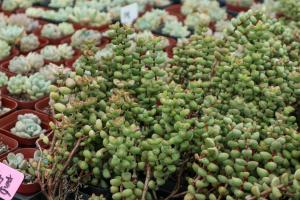How to Care and Feed Tomato Plants in Pots
Tomatoes are a popular and nutritious vegetable that can be grown in pots, making them perfect for those who have limited garden space or don't have a garden at all. However, caring for and feeding tomato plants requires a bit of know-how to ensure healthy plants and a bountiful harvest. Here are some tips to help you care for and feed tomato plants in pots.
1. Choose the Right Pot
Tomatoes have deep roots, so you'll need a pot that's at least 18 inches deep and 16 inches wide to give them enough room to grow. Use a pot that has drainage holes to prevent waterlogging and make sure it's made of a material that won't crack or break under the weight of the soil.
2. Use Quality Potting Soil
Tomatoes need a nutrient-rich soil to thrive, so it's important to use quality potting soil that's specifically formulated for container gardening. Avoid using garden soil as it may contain pests, diseases or weed seeds that can harm your plants.
3. Provide Regular Watering and Fertilizing
Tomatoes need about 1 inch of water per week, and even more during hot, dry weather conditions. Make sure the potting soil remains moist but not waterlogged, and water the plants regularly to prevent them from drying out. Fertilize the plants every two weeks with a balanced fertilizer that's high in phosphorus to promote healthy root and fruit development.
4. Support Your Plants
As your tomato plants grow taller, they may need support to keep them from falling over. Stakes, trellises or cages can be used to help them grow vertically and prevent them from sprawling out over the sides of the pot. Be sure to support the plants early in the growing season to prevent damage to the roots.
5. Prune Your Plants
Tomatoes are prone to developing too much foliage, which can reduce the amount of light and air circulation that reaches the fruit. Pruning your plants by removing the suckers that grow between the main stem and side branches can help improve fruit production and quality.
6. Manage Pests and Diseases
Tomatoes are susceptible to a variety of pests and diseases, including aphids, hornworms, and blight. Inspect your plants regularly for signs of infestation or disease, and take appropriate measures to control them as soon as possible. This may include using insecticidal soap, introducing beneficial insects or simply removing and destroying affected plants.
Conclusion
Growing tomatoes in pots may seem like a challenge, but with the right care and feeding, you can produce healthy plants and an abundant harvest of delicious tomatoes. Remember to choose the right pot and soil, provide regular watering and fertilizing, support your plants, prune them as needed, and manage pests and diseases. With a little effort and patience, you'll be enjoying juicy, ripe tomatoes all summer long.

 how many times do yo...
how many times do yo... how many planted tre...
how many planted tre... how many pine trees ...
how many pine trees ... how many pecan trees...
how many pecan trees... how many plants comp...
how many plants comp... how many plants can ...
how many plants can ... how many plants and ...
how many plants and ... how many pepper plan...
how many pepper plan...
































